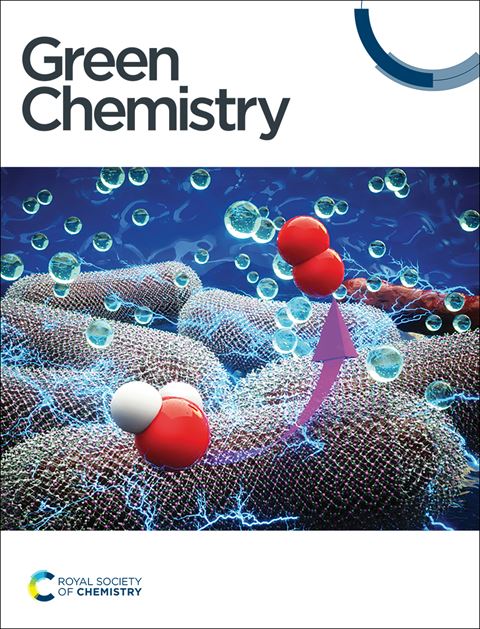Bisphosphonium-catalyzed ring-opening of cycloalkenes under visible-light irradiation†
IF 9.3
1区 化学
Q1 CHEMISTRY, MULTIDISCIPLINARY
引用次数: 0
Abstract
The selective cleavage of CC double bonds to form carbonyl groups is a fundamental maneuver in retrosynthetic analysis, empowering swift alterations to molecular structures and efficient synthesis of sophisticated, multifunctional molecules. Traditional methods like ozonolysis are effective but come with safety, environmental, and economic challenges. To address these concerns, photochemical methods have recently emerged as ideal platforms for alkene oxidative cleavage through the utilization of photons as energy sources and open-shell radicals as reactive intermediates. Herein, we disclose an oxidant-free, operationally simple, and environmentally friendly protocol for the oxidative cleavage of cyclic alkenes via in situ-generated secondary alcohol intermediates. Facilitated by a bisphosphonium catalyst, the selective integration of alkoxy radical-mediated C–C bond scission with anti-Markovnikov alkene hydrofunctionalization led to the selective cleavage of cyclic alkenes and the formation of distal phenyl-substituted aldehydes with outstanding regioselectivity. This photocatalytic process accommodates both activated and unactivated cycloalkenes and operates under mild, redox-neutral conditions. Furthermore, the use of continuous-flow reactors has significantly improved photocatalytic efficiency, providing a robust and scalable solution for large-scale applications.

双磷催化环烯烃在可见光照射下开环的研究
选择性切割CC双键形成羰基是反合成分析的基本操作,可以快速改变分子结构并有效合成复杂的多功能分子。臭氧分解等传统方法是有效的,但存在安全、环境和经济方面的挑战。为了解决这些问题,光化学方法最近成为利用光子作为能量源和开壳自由基作为反应中间体进行烯烃氧化裂解的理想平台。在此,我们公开了一种无氧化剂、操作简单、环保的方案,用于通过原位生成的仲醇中间体氧化裂解环烯烃。在双磷催化剂的催化下,烷氧基自由基介导的C-C键断裂与反马尔可夫尼科夫烯烃加氢功能化的选择性整合导致环烯烃的选择性裂解和远端苯基取代醛的形成,具有突出的区域选择性。这种光催化过程可容纳活化和未活化的环烯烃,并在温和的氧化还原中性条件下操作。此外,连续流反应器的使用显著提高了光催化效率,为大规模应用提供了强大且可扩展的解决方案。
本文章由计算机程序翻译,如有差异,请以英文原文为准。
求助全文
约1分钟内获得全文
求助全文
来源期刊

Green Chemistry
化学-化学综合
CiteScore
16.10
自引率
7.10%
发文量
677
审稿时长
1.4 months
期刊介绍:
Green Chemistry is a journal that provides a unique forum for the publication of innovative research on the development of alternative green and sustainable technologies. The scope of Green Chemistry is based on the definition proposed by Anastas and Warner (Green Chemistry: Theory and Practice, P T Anastas and J C Warner, Oxford University Press, Oxford, 1998), which defines green chemistry as the utilisation of a set of principles that reduces or eliminates the use or generation of hazardous substances in the design, manufacture and application of chemical products. Green Chemistry aims to reduce the environmental impact of the chemical enterprise by developing a technology base that is inherently non-toxic to living things and the environment. The journal welcomes submissions on all aspects of research relating to this endeavor and publishes original and significant cutting-edge research that is likely to be of wide general appeal. For a work to be published, it must present a significant advance in green chemistry, including a comparison with existing methods and a demonstration of advantages over those methods.
 求助内容:
求助内容: 应助结果提醒方式:
应助结果提醒方式:


